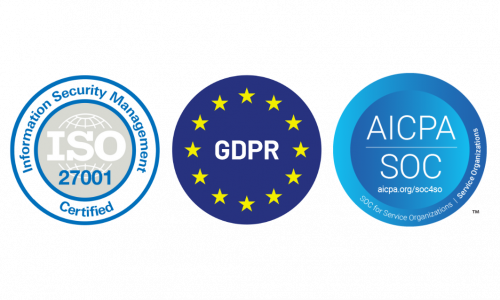
Questions to Ask When Considering Third Party Maintenance | Part 1
- 5 Minute Read
- Third-Party Maintenance
In this post:
Are you considering Third-Party Maintenance (TPM) for your organization? As with any cost-saving investment, it is important to do your research to help you make an educated decision. When researching potential support vendors, you should come armed with questions to gain a better understanding of the services offered so that you can be sure you find the right vendor for your organization’s specific needs.
To better prepare you for researching independent support vendors, we are bringing you this interview guide for evaluating potential third-party maintenance vendors. The first installment of this series will provide questions to consider when looking for support options for multiple OEM brands and where a hybrid maintenance strategy consisting of OEM and TPM support may make the most sense.
Can the Vendor Provide Support for Multiple OEM-System Brands?
One of the complications with choosing OEM support for your storage, server, and networking equipment is the multiplicity of support contracts. Your data center likely has multiple OEM vendors represented: EMC, NetApp, Brocade, Cisco, and more. Using OEM support for all of the different brands in your data center may seem ideal for your organization at first. However, keeping track of all the different maintenance contracts can quickly become unwieldy and lead to integral equipment lapsing in coverage. This can be a costly mistake. You may then have to pay recertification fees to the OEM support provider in order to regain coverage on the equipment. Third-party support providers will not charge you with recertification fees if equipment lapses in coverage, however, you should also ask if your potential vendor can design your maintenance agreement to co-terminate in order to avoid this issue altogether.
Additionally, many TPM vendors that support multiple OEM brands also allow for a single point of contact when it comes to entering a support ticket. This decreases downtime and presents an easier way to manage your data center. It is important to note that the OEM can sometimes support equipment outside of their brand. This will usually be done through an outside or third-party maintenance provider and the cost for this will be significant. Going with a third-party maintenance provider outright can save you the cost and hassle of having multiple service contracts to manage or adding other vendors onto one OEM support contract.
Key Take-Aways:
- To avoid recertification issues try to design maintenance agreements to co-terminate
- Direct TPM support on older equipment can streamline ticketing if issues arise
- OEM’s can support equipment outside of their brand but you will get a better price if you go directly to a TPM provider, rather than one through an OEM
Does your vendor have an integrated portal that allows you to easily manage a hybrid portfolio consisting or OEM, TPM and self-supported contracts?
In the Gartner report, “How to Reduce Network Equipment Support Costs,” Gartner advocates the use of a hybrid maintenance strategy, stating, “organizations with networks of more than 1,000 devices should invest in inventory and contract management tools (if their service providers don’t offer them) to help them gain better control and develop good network maintenance strategies.”
Be certain that your provider offers software to help you to manage a hybrid environment consisting of OEM, TPM, and self-supported assets. A single repository for all of this activity will greatly reduce the complexity and overhead of managing a mixed maintenance environment.
Many providers have some sort of platform, however most are limited to only the contracts they support. If you have adopted a Hybrid Maintenance Strategy, it’s worth evaluating a platform that is built to incorporate all your maintenance contracts into a single repository, regardless of vendor.
Key Take-Away:
- What you can’t see can cost you. Make a management platform a requirement and ask for a demo.
- Look for a management platform that can incorporate a Hybrid Maintenance portfolio.
How are Parts Stocked?
When choosing the best coverage for your organization you should also consider the many other factors that come into play. You may select a Service level Agreement (SLA) that guarantees an engineer will be on-site within 4 hours of an incident, but it is also imperative that the correct parts arrive as well.
In order to ensure that you will have the correct parts, you should ask the vendor about how they stock parts for your systems. You will want to get clarity about where the vendor’s forward-stocking locations are, so you can make sure you will have access to the right parts when you need them. You can also ask about whether the vendor can also provide options for keeping mission-critical parts onsite.
One final consideration: How flexible is your TPM vendor regarding SLA’s? Can they be customized beyond the standard next-business-day or 24x7x4 response? Does the vendor offer field installation services (particularly for remote or non-IT staffed locations)? Are they regularly evaluating SLA adherence? Do they offer an intelligent means of reporting on it on their platform?
Key Take-Aways:
- Location is key. Know how closely parts are stored and spared.
- Ask for details. Feel like a different SLA may be needed? Make it a point to ask your provider.
- Reporting: Does your vendor offer a reporting tool around SLA performance or optimization for their clients?
Next Steps
Want to learn more? Our second installment of this three-part series will delve deeper into the nuances involved inside your maintenance agreements.


